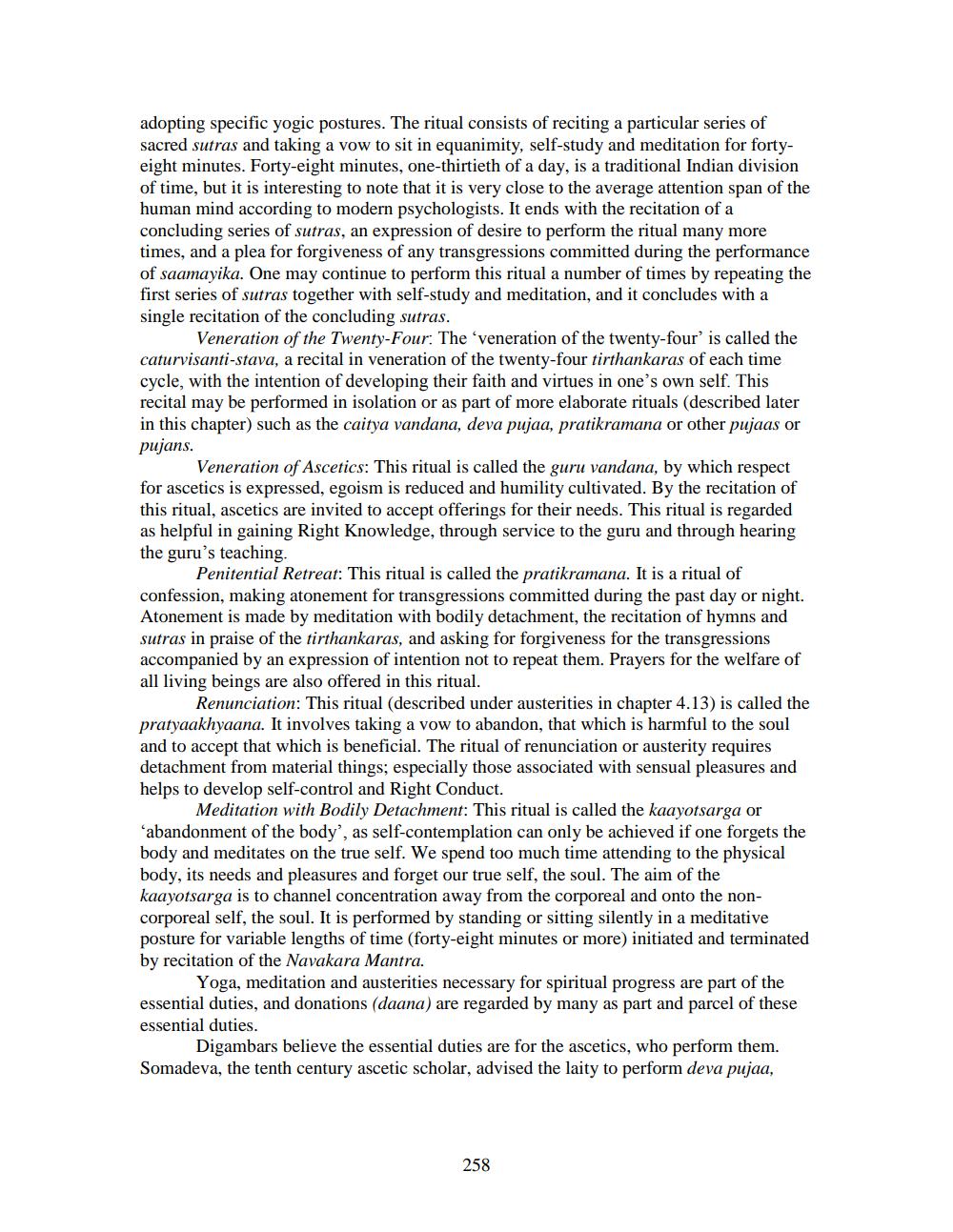________________
adopting specific yogic postures. The ritual consists of reciting a particular series of sacred sutras and taking a vow to sit in equanimity, self-study and meditation for fortyeight minutes. Forty-eight minutes, one-thirtieth of a day, is a traditional Indian division of time, but it is interesting to note that it is very close to the average attention span of the human mind according to modern psychologists. It ends with the recitation of a concluding series of sutras, an expression of desire to perform the ritual many more times, and a plea for forgiveness of any transgressions committed during the performance of saamayika. One may continue to perform this ritual a number of times by repeating the first series of sutras together with self-study and meditation, and it concludes with a single recitation of the concluding sutras.
Veneration of the Twenty-Four: The 'veneration of the twenty-four' is called the caturvisanti-stava, a recital in veneration of the twenty-four tirthankaras of each time cycle, with the intention of developing their faith and virtues in one's own self. This recital may be performed in isolation or as part of more elaborate rituals (described later in this chapter) such as the caitya vandana, deva pujaa, pratikramana or other pujaas or pujans.
Veneration of Ascetics: This ritual is called the guru vandana, by which respect for ascetics is expressed, egoism is reduced and humility cultivated. By the recitation of this ritual, ascetics are invited to accept offerings for their needs. This ritual is regarded as helpful in gaining Right Knowledge, through service to the guru and through hearing the guru's teaching
Penitential Retreat: This ritual is called the pratikramana. It is a ritual of confession, making atonement for transgressions committed during the past day or night. Atonement is made by meditation with bodily detachment, the recitation of hymns and sutras in praise of the tirthankaras, and asking for forgiveness for the transgressions accompanied by an expression of intention not to repeat them. Prayers for the welfare of all living beings are also offered in this ritual.
Renunciation: This ritual (described under austerities in chapter 4.13) is called the pratyaakhyaana. It involves taking a vow to abandon, that which is harmful to the soul and to accept that which is beneficial. The ritual of renunciation or austerity requires detachment from material things, especially those associated with sensual pleasures and helps to develop self-control and Right Conduct.
Meditation with Bodily Detachment: This ritual is called the kaayotsarga or fabandonment of the body, as self-contemplation can only be achieved if one forgets the body and meditates on the true self. We spend too much time attending to the physical body, its needs and pleasures and forget our true self, the soul. The aim of the kaayotsarga is to channel concentration away from the corporeal and onto the noncorporeal self, the soul. It is performed by standing or sitting silently in a meditative posture for variable lengths of time (forty-eight minutes or more) initiated and terminated by recitation of the Navakara Mantra.
Yoga, meditation and austerities necessary for spiritual progress are part of the essential duties, and donations (daana) are regarded by many as part and parcel of these essential duties.
Digambars believe the essential duties are for the ascetics, who perform them. Somadeva, the tenth century ascetic scholar, advised the laity to perform deva pujaa,
258




